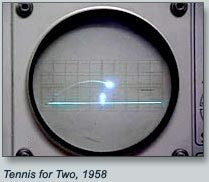
The William A. Higinbotham Game Studies Collection (WHGSC) at Stony Brook University is dedicated to documenting the material culture of screen-based game media in general and in specific, collecting and preserving the texts, ephemera, and artifacts that document the history of a 1958 computer simulation designed by Higinbotham that, over the years, has become known as Tennis for Two. The collection is managed and curated by Head of Special Collections and University Archives, and University Archivist, Kristen J. Nyitray, and Associate Professor of Culture and Technology, Raiford Guins.

The history of the collection began when the museum was founded in 1996 by purchasing video game consoles and complementary accessories at auctions and car boot sales. Afterwards it was mainly focused on acquisitions for special exhibitions contributing to a continuously growing inventory of both software and hardware. Since the opening of the museum in early 1997, however, generous donations from many people have become the most important source for our ever-increasing collection.

The curation of videogames, their collection and preservation creates new challenges for the Museum. In 2002, Stanford curator of History of Science and Technology and Film and Media collections Henry Lowood called for new institutional and curatorial models capable of addressing videogames. Yet in a 2011 survey on the state of Digital Preservation, authored by Barwick et al reflected that most heritage institutions remain locked into a traditional object based understanding of collecting, and still do not have policies capable of supporting digital artefacts. There are however a number of organisations dedicated to collecting videogames and although they share a purpose in ensuring the preservation of these significant cultural artefacts their curatorial agendas are not identical but reflect the overall philosophies of the institution.



